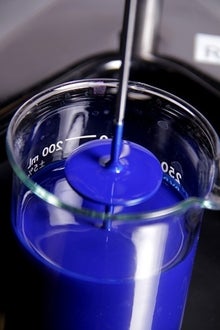Background
The viscometer & rheometer market generated USD $683.0 million in 2017 and is expected to grow at a Compound Annual Growth Rate (CAGR) of 5.2% from 2017 to 2024. The viscometer market is valued at USD $483.0 million including different types of viscometers such as orifice, capillary, falling piston, rotational, falling ball, falling sphere, bubble, U-tube, inline, and vibrational viscometers. Inline process viscometer segment is expected to grow from USD$133 million in 2015 to USD $225 million in 2023 at 6.5% CAGR. The demand from petroleum, food, life science research and pharmaceutical industries is driving the market growth. For instance, the protein therapeutic market’s rapid growth has increased the demand for viscometers due to syringe-ability and because it is a relevant parameter for purification, fill/finish, and drug delivery.
As viscosity is a key deciding factor in many diverse domains, there is a need for a device that can measure and analyze the viscosity with high precision and accuracy while requiring less sample volume (i.e., a few microliters).
Description of the invention
Waterloo’s Microfluidics Viscometer provides a novel and disruptive microfluidic chip design that allows for small volume of fluids (i.e., a few microliters) to be measured. The novel method used for calculating shear rate and viscosity accounts for interfacial tension, thereby allowing both Newtonian and non-Newtonian fluids to be accurately measured.
Current competitive technologies require much larger sample volumes (greater than 500 microliters); are costly to fabricate; overestimate the sheer stress on the sample leading to the degradation of the long-term performance of the device; or have only been tested using Newtonian fluids. In addition, the range of the shear rate of these technologies are narrow which limits their application to the areas involving high shear rate, such as tear film in human eyes.
The Microfluidic Viscometer addresses all of these limitations as it can measure the viscosity of small volumes (a few microliters) of both non-Newtonian and Newtonian fluids. Its performance has been measured over a range of shear rates and validated with a commercially available Brookfield rheometer. It can measure a much higher shear rate. It is cost effective and can be used in mass production. Highly advantageous for the viscosity measurement of rare (i.e., limited volumes or expensive materials) fluids, particularly in the drug delivery and healthcare industries.
Advantages
- Accurately measures viscosity of small samples (few microliters) of both Newtonian and non-Newtonian fluids.
- Accurately measures wider ranges of sheer rates.
- Cost effective and can be used in mass production.
- Validated performance against a commercially available Brookfield rheometer.
Potential applications
- Drug delivery, injectable drugs/therapeutics.
- Healthcare (e.g., measuring viscosity of cerebrospinal fluids and synovial fluids).

Reference
10212
Patent status
US Provisional patent filed
Stage of development
Prototype developed and currently being validated
Contact
Scott Inwood
Director of Commercialization
Waterloo Commercialization Office
519-888-4567, ext. 43278